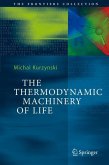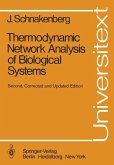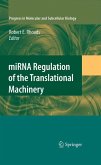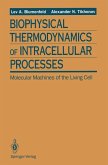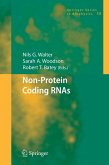Thermodynamics was created in the ?rst half of the 19th century as a theory designed to explain the functioning of heat engines converting heat into mechanical work. In the course of time, while the scope of research in this ?eld was being extended to a wider and wider class of energy transformations, thermodynamics came to be considered as a general theory of machines identi?ed with energy transducers. Imp- tant progress in biochemistry in the ?rst half of the 20th century, and in molecular biology in the second half, made it possible to think of treating even living organisms as machines, at least on the subcellular level. However, success in applying thermodynamics to elucidate the phenomenon of life has been rather mitigated. Two reasons seem to be responsible for this unsatisfactory s- uation. Nineteenth century thermodynamics dealt only with simple (homogeneous) systems in complete equilibrium. Although during the 20th century a nonequilibrium thermodynamics was developed, sta- ing with the Onsager theory of linear response and ending with the Prigogine nonlinear theory of dissipative structures, these theories still concern the originally homogeneous systems. Because living organisms are complex systems with a historically frozen spatial and functional structure, a thermodynamics of both nonequilibrium and complex s- tems is needed for their description. The ?rst goal of the present book is to formulate the foundations of such a thermodynamics.
From the reviews:
"The book seamlessly presents the historical and philosophical evolution of a fundamental principle ... and develops the implications of the principle in a staggeringly wide range of contexts. ... a work that is engaging, lucid and supremely approachable. ... the warmth and sincerity of the writing make this book a joy ... . Highly recommended." (Philosophy, Religion and Science Book Reviews, bookinspections.wordpress.com, May, 2014)
"The book seamlessly presents the historical and philosophical evolution of a fundamental principle ... and develops the implications of the principle in a staggeringly wide range of contexts. ... a work that is engaging, lucid and supremely approachable. ... the warmth and sincerity of the writing make this book a joy ... . Highly recommended." (Philosophy, Religion and Science Book Reviews, bookinspections.wordpress.com, May, 2014)


